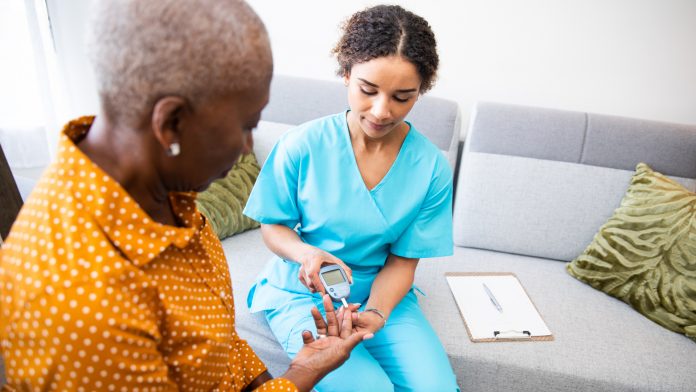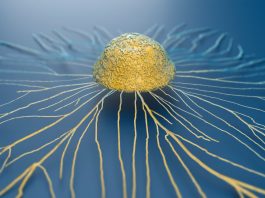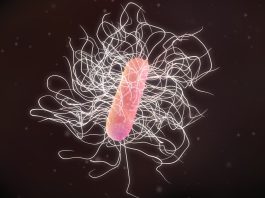Stefano Del Prato, President of the European Association for the Study of Diabetes, spoke of continuing to bring hope to diabetes patients as he opened the organisation’s 56th annual meeting.
The European Association for the Study of Diabetes’ (EASD) 56th annual meeting was held virtually, attracting over 20,000 delegates from as far afield as Brazil, the USA, and Saudi Arabia. The organisation’s President Stefano Del Prato outlined the EASD’s continuing work to provide hope for diabetes patients, and to find solutions.
“The battle against the pandemic has required immense and generous effort,” he said, thanking all those who had assisted patients both with and without diabetes. He also paid tribute to those who died from COVID-19, leading a minute’s silence for all victims of the pandemic.
“A community is strong when it learns from critical times and takes the opportunity to evolve to an efficient level,” said Del Prato. “In spite of the challenges faced, our community has been investigating new ways to continue providing care to the many people with diabetes.”
He outlined how telemedicine is becoming increasingly popular, alleviating pressure on services and facilitating access to care, while reducing the number of people that patients come into contact with, and posed a question around what impact it could have on the future of diabetes care.
The EASD has been collecting information and analysing data on the relationship between diabetes and COVID-19 since the start of the pandemic he said, with 2,000 research papers published to date.
“Generating and fostering research and science in diabetes is at the core of the EASD,” he said. “Our aims are to encourage and support research in the field of diabetes, the rapid diffusion of acquired knowledge, and to facilitate its application.”
The European Foundation for the Study of Diabetes
The founding of the European Foundation for the Study of Diabetes (EFSD), by the EASD, 20 years ago has been key, he said, and to date it has provided over €100m to support research projects, allocating €8.5m last year alone.
Highlighting the role of study groups in supporting research and attracting young researchers into the field, he said: “Currently, there are 24 EASD study groups, and such a large number reflects the liveliness of European research in diabetes. Some of the groups have been active for a long time, such as the psychosocial aspects of the diabetes study group which celebrates its 25th anniversary this year, while others have just made their first steps, but all of them are and remain very active.
“The role of the study groups is essential to the activity of our association, as they represent a natural link between the membership and the goals pursued by the EASD and EFSD. They probe new ideas and investigate, assess, and validate new techniques, increasing the focus on specific areas, and even more importantly, recruit young investigators, providing them with the initial arena in which to present and discuss their results.
“They are instrumental to attracting and motivating young investigators and bringing new avenues of research to the attention of the EASD and ESFD top management. Finally, they represent an immense reservoir of top-level expertise.”
Supporting research is the first aim of the EASD, explained Del Prato, while the second is to “support the rapid diffusion of acquired knowledge” with the annual meeting acting as a powerful forum for the dissemination of knowledge, and this year’s virtual format allowing it to reach a much wider audience.
He thanked the individuals involved in delivering the event, including Senior Vice President, Professor Chantal Mathieu, who also leads on the EASD’s e-learning programme, launched in 2018.
E-learning
“E-learning is another powerful way to support the rapid diffusion of acquired knowledge,” said Del Prato. “And starting this year, we will ensure a strong connection between the virtual annual meeting and the e-learning platform. Our Congress will not end on Friday with the last oral presentation and the last discussion, but rather, the content of the meeting will be revitalised through the rest of the year throughout the e-learning platform.”
Course topics range from ‘Diabetes and Ramadan’ to the ‘Pathogenesis of Type one diabetes’ and over the last year the programme has been accessed by over 25,000 people from around the globe, with an average of 2,000 visitors every month. The major elements of the site are soon to be translated into other languages including French, Spanish, Arabic, and Mandarin.
Collaboration with the American Diabetes Association
The EASD’s third aim is to facilitate the application of its acquired knowledge, said Del Prato, something that it has been particularly active in, in recent years. For example, The Management of Hyperglycemia in Type 2 Diabetes consensus report, developed in collaboration with the American Diabetes Association (ADA), has gained international reputation and respect.
“The consensus is regularly updated in light of new clinical evidence and a new process is already ongoing,” he explained. “More recently, again, in collaboration with the ADA, the consensus report on precision medicine in diabetes has been introduced, setting the stage for a new taxonomy of diabetes and exploring the possibility for a truly personalised treatment approach.
“Next year, the draft consensus report on the management of hyperglycemia in Type one diabetes will be presented at the ADA, and the final document released at the 57th annual meeting of the EASD thus consolidating what is now a long-standing and powerful collaboration among two of the most influential diabetes scientific and professional societies in the world.”
The European Diabetes Forum
The EASD is “actively pursuing new knowledge” in diabetes, said Del Prato, but it is very aware of the hurdles that remain in translating science into policy action.
“We still need to find better ways for science to be used and transferred effectively by the decision makers. We need to identify the obstacles encountered in communicating science to policymakers, and we need more solid ways to manage scientific uncertainties.
“We are confident that the EASD and EFSD can handle most of the factors related to research but what is needed, is an independent body that probes, assesses, and evaluates organisational factors across European countries and that is why the European Diabetes Forum (EUDF) was launched at the beginning of this year.
“We believe that a regular flow of information between the EASD, the EUDF and all of the organisations that they represent may increase the transferability of new knowledge into the political agenda.
“The mission of the EUDF is to make it possible for all voices to be heard nationally and on a European level, to ensure that policy action can be directed toward optimal diabetes care.”
The founding members of the EUDF will work under the presidency of Professor Chantal Mathieu on three main pillars, data and registries; self-care, technology and digitalisation; and integrated care, fuelling three strategic forums with the participation of all EUDF members and the collaboration of national diabetes forums.
Looking to the future
After thanking the EASD team for their continuing hard work and contribution to achieving its goals, Del Prato highlighted the important role that the organisation’s members play.
“All these people do their job out of dedication, interpreting the true spirit of the mission of the EASD; but we need more. We need you,” he said. “We need you to become members of this association. We need you to contribute to the mission of this association. We need you to take an active part in the decisions of the association. Please join us because with all of you, we want to continue supporting research, we want to continue diffusing new knowledge. We want to continue implementing this application and we want to continue looking forward.
“We are looking forward to the next annual meeting of the EASD with great enthusiasm because next year will be a very important one to the diabetes world and to the entire medical community, as we will celebrate the 100-year anniversary of the discovery of insulin, a landmark achievement for humankind and the beginning of modern diabetology.
“So, let me conclude with the front page of the Toronto Daily Star, which was published in 1922 celebrating the discovery of insulin, because the headline, I feel, summarises all that we have done so far and will continue pursuing in the future, and it says ‘diabetes sufferers given message of hope’ and the EASD will continue working to provide hope and to provide solutions.”
European Association for the Study of Diabetes
Tweet @EASDnews
www.easd.org
Please note, this article will also appear in the fourth edition of our new quarterly publication.









